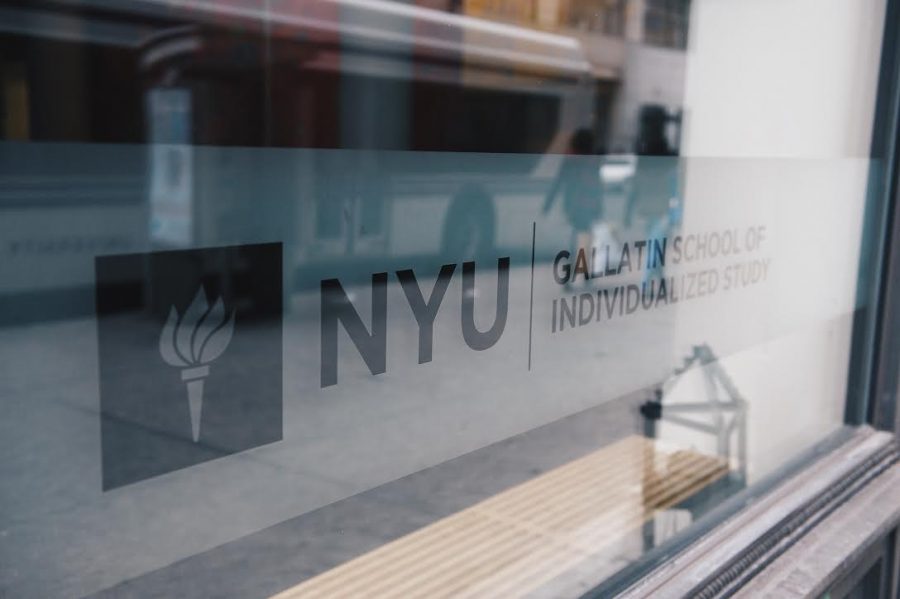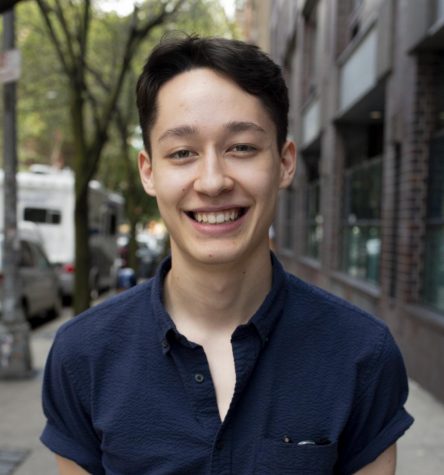Gallatin Turns to Students to Further Diversity Efforts
Facade of Gallatin’s NYU building, home many distinct majors (Renee Yang)
February 8, 2017
The Gallatin Student Council sent an email on Jan. 31 to its entire student body — requesting that only students of color fill out the attached survey — that asked about their experiences as students of color at NYU.
GSC worked on the survey in conjunction with administrators and will present the results of the survey at a town hall later this month. They hope to create a group for Gallatin students of color in order to further the school’s inclusionary efforts.
But Gallatin is not singular in increasing efforts to foster diversity at NYU, as nation-wide racial tensions instigated the creation of a diversity task force and university-wide diversity forum in November 2015. And in October 2016, NYU began its search for a Chief Diversity Officer, which is a new senior administrative position.
Gallatin senior and GSC president Tyler Benjamin first thought of creating the survey during his freshman year and said that such a group is especially important right now.
“At the time we’re in now, where people of color of all facets are being marginalized, this is definitely a time when these types of spaces are needed,” Benjamin said. “I’m trying to make every student of color in Gallatin feel welcome.”
Gallatin senior and GSC Diversity Liaison Alexis Williams said that creating a group specifically for students of color in Gallatin is important, because it is one of the few schools at NYU that does not have one.
“We felt that it was very strange, because Gallatin is kind of like the social activism school,” Williams said. “We thought that at least before we leave, it would be important to get the ball rolling on that.”
Benjamin said that after reading the survey, Gallatin administration sent it to the entire Gallatin community. He said that sending out surveys like this one to the entire student body is extremely uncommon.
Benjamin and Williams both appreciated the feedback they received from Gallatin Dean Susanne Wofford and the administration-at-large.
“One thing I do like is that Dean Wofford is very supportive,” Benjamin said. “She’s very proactive [and] very responsive. I’m glad that the Gallatin administration, after reading the survey, sent it out to the entire school, which is unheard of in most schools.”
Benjamin is involved in several organizations on campus — such as Black Student Union and Gentlemen of Quality — but most importantly, Benjamin believes that the most impactful thing the university could do for students of color is to hire more faculty of color.
“I think that [it] makes a big difference when you step into your classroom and you see ‘the professor looks just like me,’” Benjamin said.
Williams thinks that university-wide initiatives pushing for inclusion such as this survey are positive steps toward inclusion and equality, but she questions the efficacy of these efforts. She believes that NYU presently struggles to collect student input when it comes to diversity. As a result, the initiatives do not resonate with students.
“In a lot of ways diversity initiatives fail at communicating with students,” Williams said. “It’s easy for the administration to get caught up because they want to not step on people’s toes or make anyone feel unwanted.”
Gallatin freshman Austin Christy, a white student, said that unless diversity is encouraged, education will not be accessible for everyone.
“I think it’s important to make everybody feel comfortable in an academic setting because learning requires a lot of vulnerability and respect,” Christy said. “Education only works when everyone is comfortable.”
Both Williams and Benjamin were surprised by the survey results. They said that some of the respondents had large demands, while a number of responses to the survey — which asked what respondents believed Gallatin could better do to foster community for students of color — requested smaller improvements, such as vending machines and water fountains, that did not necessarily regard diversity.
“I’m very much focused on making sure that this program gets implemented or that this policy gets changed for these people when they’re like, ‘I would kind of just like a water fountain,’” Benjamin said. “So many people emailed back [saying], ‘Oh my god, thanks for this survey, I feel better filling it out.’”
Benjamin said that in the nation’s current — where all people of color are being marginalized — accepting spaces are needed.
“Right now people are looking for spaces to just be,” Benjamin said. “You just come be with other people that look like you, feel like you and just be.”
Email Sayer Devlin at [email protected].




























































































































































